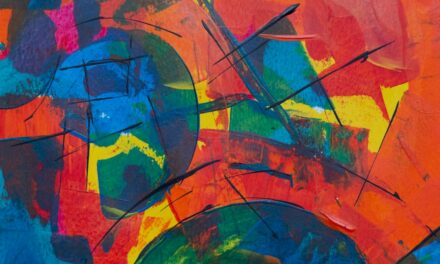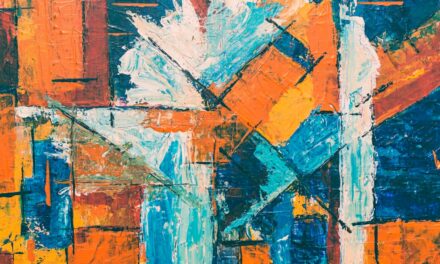Mixed media artwork is a captivating genre that transcends traditional boundaries, allowing artists to explore a myriad of materials and techniques. This form of art combines various mediums—such as paint, ink, collage, and found objects—into a single cohesive piece. The beauty of mixed media lies in its versatility; artists can express their creativity through an amalgamation of textures, colours, and forms, resulting in dynamic compositions that engage the viewer on multiple levels.
The genre has gained significant popularity in recent years, as it encourages experimentation and innovation, inviting both seasoned artists and novices to push the limits of their artistic expression. The history of mixed media can be traced back to the early 20th century, with movements such as Dadaism and Surrealism paving the way for artists to incorporate unconventional materials into their work.
Today, mixed media continues to evolve, with contemporary artists drawing inspiration from a diverse range of sources, including technology, culture, and personal experiences. As a result, mixed media artwork not only reflects the artist’s vision but also serves as a commentary on the complexities of modern life.
Summary
- Mixed media artwork involves using a combination of different materials and techniques to create a unique piece of art.
- When photographing and scanning mixed media artwork, it’s important to choose the right equipment to capture the details and textures accurately.
- Setting up the perfect lighting is crucial for capturing the true colours and textures of mixed media artwork.
- When photographing mixed media artwork, consider the angle, composition, and background to showcase the piece effectively.
- When scanning mixed media artwork, use a high-resolution scanner and adjust the settings to capture the details and textures accurately.
Choosing the Right Equipment for Photographing and Scanning
Camera Stability is Key
In addition to the camera itself, investing in a sturdy tripod can significantly enhance the quality of your photographs. A tripod stabilises the camera, reducing the risk of blurriness caused by shaky hands or movement during exposure. Furthermore, consider using a remote shutter release or the camera’s timer function to minimise vibrations when taking the shot.
Scanning Mixed Media Artwork
For scanning mixed media artwork, a high-quality flatbed scanner is recommended. These scanners provide even lighting and can capture fine details without distortion, making them ideal for artworks that incorporate delicate materials or intricate designs.
Investing in Quality Equipment
By investing in the right equipment, you can ensure that your mixed media artwork is captured to the highest standard, showcasing the intricate details and textures that make it unique.
Setting up the Perfect Lighting for Capturing Mixed Media Artwork
Lighting plays a pivotal role in photography, particularly when it comes to mixed media artwork. The right lighting can accentuate textures and colours, bringing the piece to life in a way that does justice to the artist’s vision. Natural light is often considered the best option for photographing artwork, as it provides a soft, even illumination that reduces harsh shadows and highlights.
Ideally, set up your workspace near a large window during daylight hours when the light is most diffused. However, be mindful of direct sunlight, which can create glare and wash out colours. If natural light is not available or if you are working in less than ideal conditions, artificial lighting can be an effective alternative.
Softbox lights or LED panels can provide consistent illumination without creating harsh shadows. When using artificial lights, position them at a 45-degree angle to the artwork to achieve even lighting across the surface. Additionally, consider using reflectors to bounce light onto darker areas of the piece, ensuring that every detail is captured beautifully.
Experimenting with different lighting setups can yield surprising results and help you find the perfect balance for your specific artwork.
Tips for Photographing Mixed Media Artwork
When photographing mixed media artwork, there are several techniques that can enhance the final image. First and foremost, ensure that your camera is set to the correct settings for optimal results. Use a low ISO setting to minimise noise and maintain clarity in your images.
A higher aperture (f-stop) will increase depth of field, ensuring that all elements of the artwork are in focus. Additionally, consider shooting in RAW format rather than JPEG; RAW files retain more detail and allow for greater flexibility during post-processing. Composition is another critical aspect of photographing mixed media artwork.
Take time to frame your shot thoughtfully; consider the rule of thirds or other compositional guidelines to create a visually appealing image. Pay attention to the background as well; a clean, uncluttered backdrop will help draw attention to the artwork itself. If possible, capture multiple angles and distances to provide a variety of options during editing.
Lastly, don’t forget to take close-up shots of intricate details within the piece; these can be particularly striking when shared on social media or in portfolios.
Tips for Scanning Mixed Media Artwork
Scanning mixed media artwork requires a slightly different approach than photography but can yield equally impressive results. Begin by preparing your artwork; ensure it is clean and free from dust or debris that could affect the scan quality. If your piece is three-dimensional or has significant texture, consider using a scanner with a higher resolution to capture these details effectively.
A resolution of at least 300 DPI (dots per inch) is recommended for most artworks, but higher resolutions may be necessary for larger pieces or those with intricate details. When placing your artwork on the scanner bed, ensure it lies flat and is properly aligned. If your piece is larger than the scanner bed, you may need to scan it in sections and later stitch the images together using editing software.
Be mindful of any reflections or glare that may occur during scanning; adjusting the angle of the artwork or using a scanner with anti-glare features can help mitigate this issue. Once you have scanned your artwork, review each image carefully for any imperfections or areas that may require further editing before sharing or displaying.
Editing and Enhancing Mixed Media Artwork Images
Basic Adjustments
Editing software such as Adobe Photoshop or Lightroom offers powerful tools for enhancing images and correcting any issues that may have arisen during photography or scanning. Begin by adjusting basic settings such as exposure, contrast, and colour balance to ensure that the digital representation closely matches the original piece. Pay particular attention to colour accuracy; mixed media artworks often feature vibrant hues that should be faithfully reproduced in digital form.
Advanced Editing Techniques
Beyond basic adjustments, consider utilising advanced editing techniques to further enhance your images. Cropping can help eliminate distractions from the background or improve composition by focusing on specific elements within the artwork. Additionally, tools such as sharpening filters can enhance fine details and textures that may have been lost during capture.
Striking a Balance
However, it is essential to strike a balance; over-editing can lead to an unnatural appearance that detracts from the authenticity of the artwork. Aim for a polished yet true-to-life representation that showcases your artistic vision.
Displaying and Sharing Mixed Media Artwork Images
Once you have captured and edited your mixed media artwork images, it’s time to share them with the world. There are numerous platforms available for displaying your work, each offering unique opportunities for engagement with audiences. Social media platforms such as Instagram and Pinterest are particularly popular among artists for showcasing visual content; these platforms allow you to connect with fellow creatives and potential buyers alike.
When sharing images online, consider using relevant hashtags and engaging captions to increase visibility and encourage interaction. In addition to social media, consider creating an online portfolio or website dedicated to your mixed media artwork. This space can serve as a professional showcase of your work while providing potential clients or galleries with easy access to your portfolio.
Ensure that your website is visually appealing and user-friendly; high-quality images should take centre stage alongside information about your artistic process and background. Furthermore, consider participating in online exhibitions or art fairs that cater specifically to mixed media artists; these events can provide valuable exposure and networking opportunities within the art community.
Conclusion and Final Thoughts
Capturing mixed media artwork through photography or scanning is an essential skill for artists looking to share their creations with a broader audience. By understanding the nuances of equipment selection, lighting setup, and editing techniques, artists can produce high-quality images that do justice to their artistic vision. The process may require patience and practice; however, the rewards are well worth the effort as they enable artists to showcase their work in its best light.
By embracing new technologies and techniques for capturing their creations, artists can continue to push boundaries while connecting with audiences around the globe. As you embark on this journey of documenting your mixed media artwork, remember that each image tells a story—one that deserves to be shared with passion and authenticity.
When it comes to capturing the intricate details of mixed media artwork, it is essential to understand the techniques involved. One interesting article that delves into the world of art techniques is An Introduction to the Art Technique: Gilding. This article provides valuable insights into the process of gilding, which can add a touch of luxury and sophistication to mixed media pieces. Additionally, exploring the rich art culture around the world can also inspire artists to create unique and innovative works. For a deeper look into art culture, check out this article. Furthermore, for those interested in Latin American art, the Museo de Arte Latinoamericano de Buenos Aires in Argentina offers a fascinating collection of artworks. Learn more about this renowned museum in this article.


